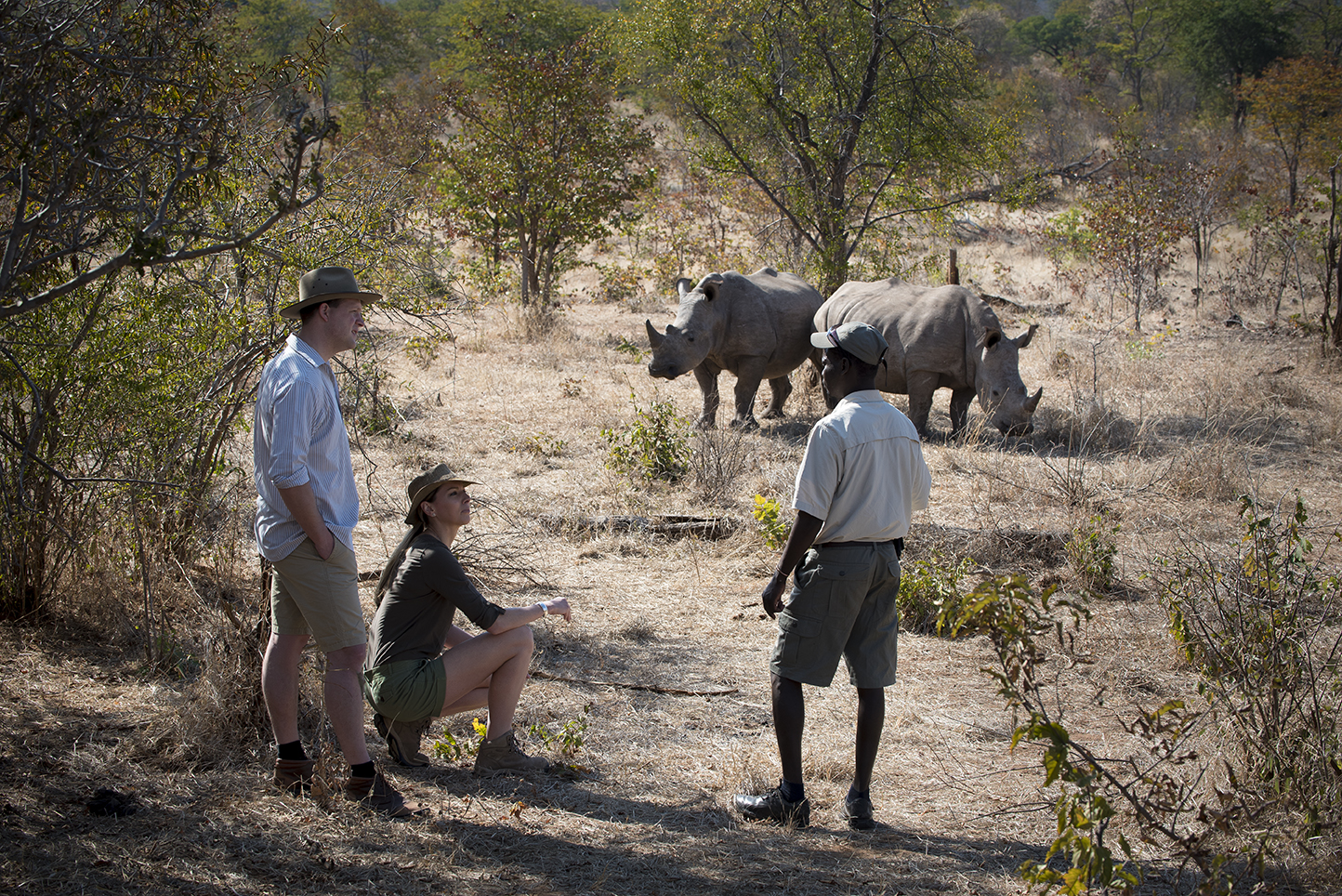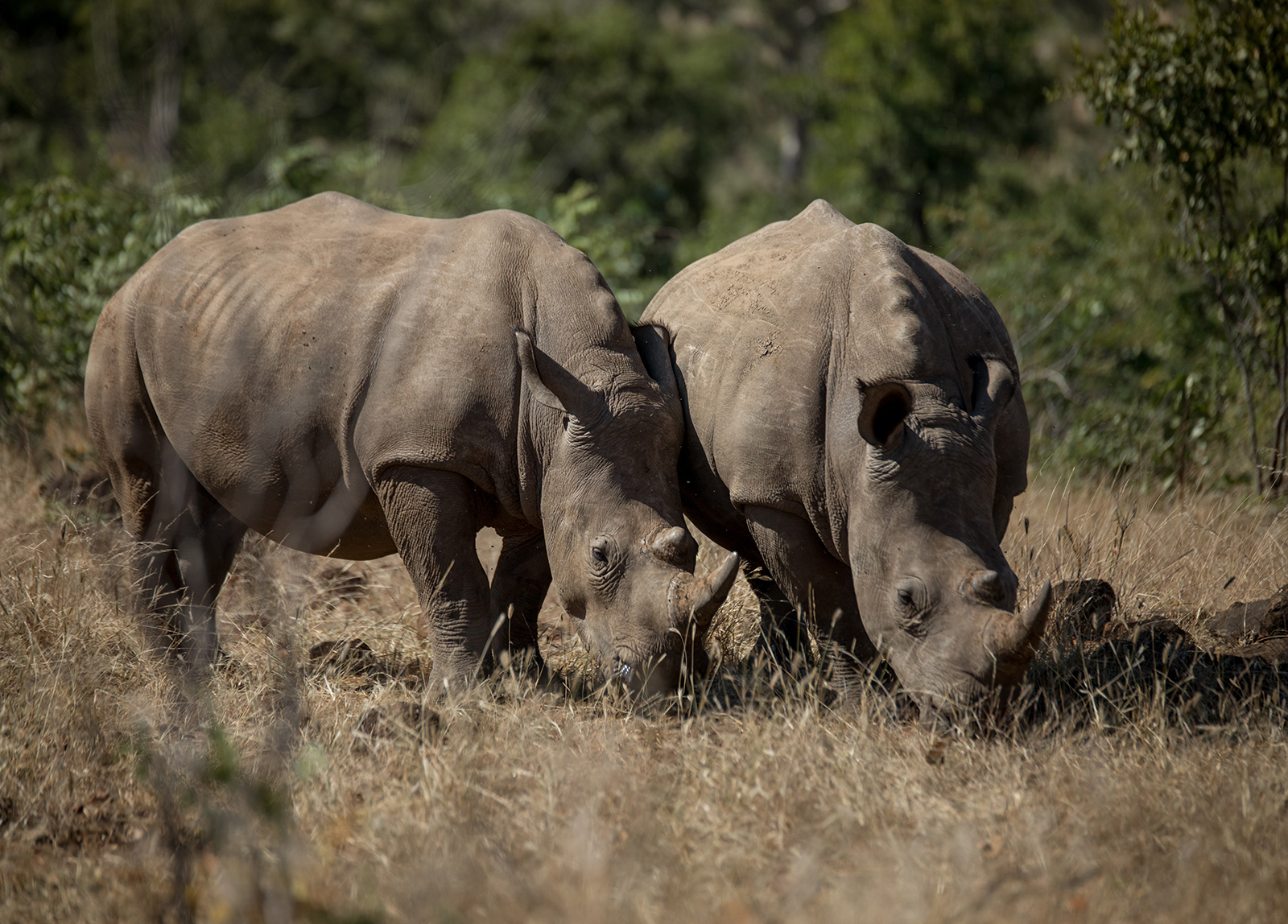This post was published originally on the African Bush Camps blog, here.
Rhinos play an essential role in the ecosystems around them. They are herbivores and important grazers with a huge appetite. Not only do they help shape the African landscape, but they also maintain an essential environmental balance.
Rhinos have become a sought-after “travel experience,” especially because they are a member of Africa’s Big Five and critically endangered. The main concerns for the species are protecting them from poachers and their habitats for the benefit of future generations, eco-tourism, and wildlife preservation.

Black Rhinoceros
BLACK RHINO VS. WHITE RHINO
One can be misled by the name and wonder, “How come I only know of grey rhinos?” Technically, there are no white or black rhinos; both of the existing African rhinos have a grey skin color. The curve of their lips is the simplest method to tell the two rhino species apart.
White rhinos tend to be bigger than black rhinos, and their bodies are longer, imposing, and barrel-shaped. In contrast, black rhinos are shorter, sturdier, and more compact. An adult white rhino may weigh up to 2,300 kg, but a black rhino seldom weighs more than 1,000 kg.
White rhinos are grazers; therefore, their flat and large lips are ideal. They function as “lawnmowers,” having powerful muscles that grab and shred the grass for effective eating.
Black rhinos prefer shrubs, leaves, and branches. As a result, their lips have developed into pointed lips (shaped like a hook) to allow them to grasp the trees.

TERRITORY
White rhinos may be seen in groups of up to 14, primarily females and their calves. Adult male white rhinos are extremely territorial, marking their territory with scraped dung mounds. Male territories are roughly one square kilometer in size, whereas female territories can be seven times greater. Breeding females are barred from leaving a dominant male’s area meticulously designated and monitored by the dominant male. When fighting for a particular breeding female, the males will engage in violent combat, sometimes inflicting major wounds on each other and occasionally resulting in death.
The black rhino has long been thought to be more aggressive and inquisitive than the white rhino. It has been suggested that their habitat differences significantly affect their behavior. Black rhinos are extremely difficult to spot in dense forests and, if frightened, will charge the threat.

Southern White Rhinoceros
THREATS TO SURVIVAL
Rhino horn is essential in Traditional Chinese Medicine and has become popular as a status symbol. Poaching is a danger in all rhino nations, but Southern Africa is being intensively targeted since it is home to the majority of rhinos in the world.
Land clearance for human development, agricultural production, and logging continually expands and is a massive danger to all species. Wildlife requires room to grow and develop, which is also a significant impediment to rhino population recovery and growth.
HOW MANY BLACK AND WHITE RHINOS REMAIN ON THE PLANET?
Both rhinos are listed as endangered. While white rhinos are “near threatened,” with just around 10.082 mature species left in the world, black rhinos are “critically endangered,” with only 3.142 adult species surviving.
WHERE CAN I FIND BLACK AND WHITE RHINOCEROS?
Both species are found only on the African continent. Kenya, South Africa, Namibia, and Zimbabwe are home to the southern white rhino. However, just two female northern white rhinos left in the world, both of which dwell in Kenya. Kenya, Rwanda, South Africa, and Namibia are home to black rhinos.
